We go off the beaten path… a lot. So many often assume that our van is 4 wheel drive. It’s not, however, and today we’re going to talk about choosing between a 2 wheel drive or 4×4 Sprinter Van, the limitations of our van, and the off road recovery gear that is essential for any off road travel.
CHOOSING A 2WD VS 4X4 CAMPERVAN
Considering the amount of time we spend off the beaten path and camping in remote places like BLM land and Forest land, you might think that our van is a 4×4 Sprinter. But it isn’t, it’s a 2WD Sprinter. There were really two major factors that caused us to choose a 2 wheel drive Sprinter over a 4×4 Sprinter.
The first factor was availability. Mercedes only began making 4×4 Sprinters in 2015, and by the time we began building our DIY Campervan in early 2017, there were no used 4x4s available and the new 2017s were on backorder. So had we wanted a 4×4, we would have had to purchase it brand new… and then wait for 10-12 months to get it.
The second factor was price. Plain and simple, the brand new 4×4 Sprinters were well out of our price range at around $60k. Had we been purchasing a new Sprinter, we would have considered the price difference, but since our budget for the van purchase was closer to $15k, that was out of the question. Additionally, we could have converted our 2WD Sprinter to a 4×4, but that would have put us out another $20-25k, and spending that amount on a 10 year old vehicle wasn’t an option for us.
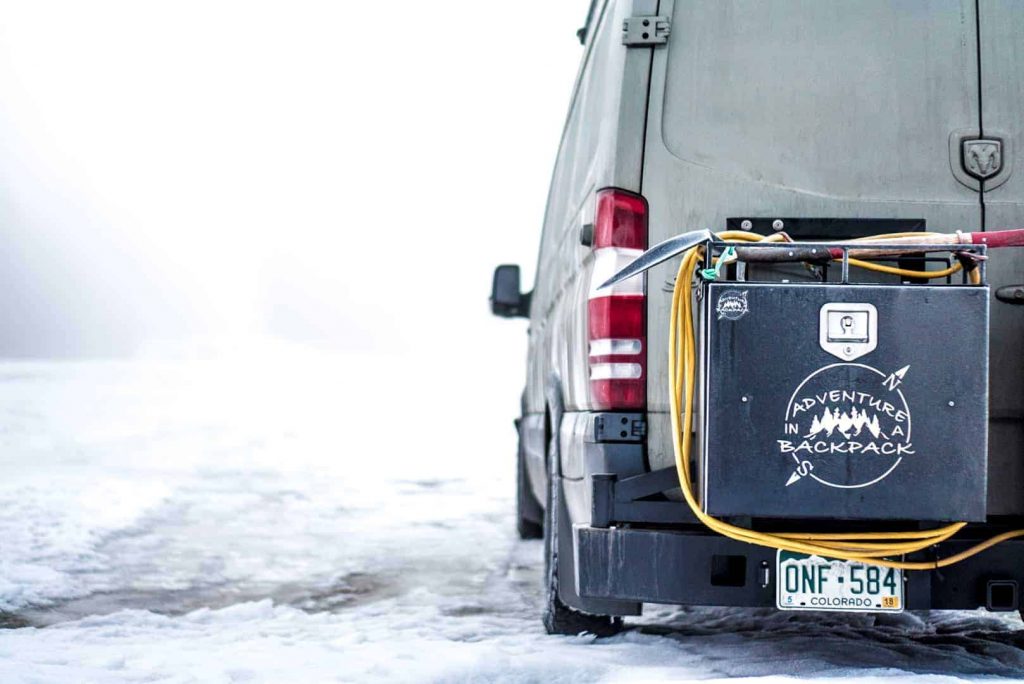
LIMITATIONS OF A 2WD SPRINTER CAMPERVAN
Even though we were not able to buy a 4×4 Sprinter, we don’t really feel like it has limited our ability to explore remote areas and back roads. We are able to get into some very bumpy back roads and more remote places than many others without 4×4 would go.
Our van is also our home, and all of our possessions are in our van. So as we travel down a rough back road and the van pitches from side to side, all of our belongings do the same. As we thought more and more about a 4×4 van, we decided that any road that would be rough enough to need 4×4 would likely be too rough to travel down with our house attached to it anyway.
Ultimately, we don’t feel like having a 2WD Sprinter is a huge limitation in comparison to a 4×4 Sprinter.
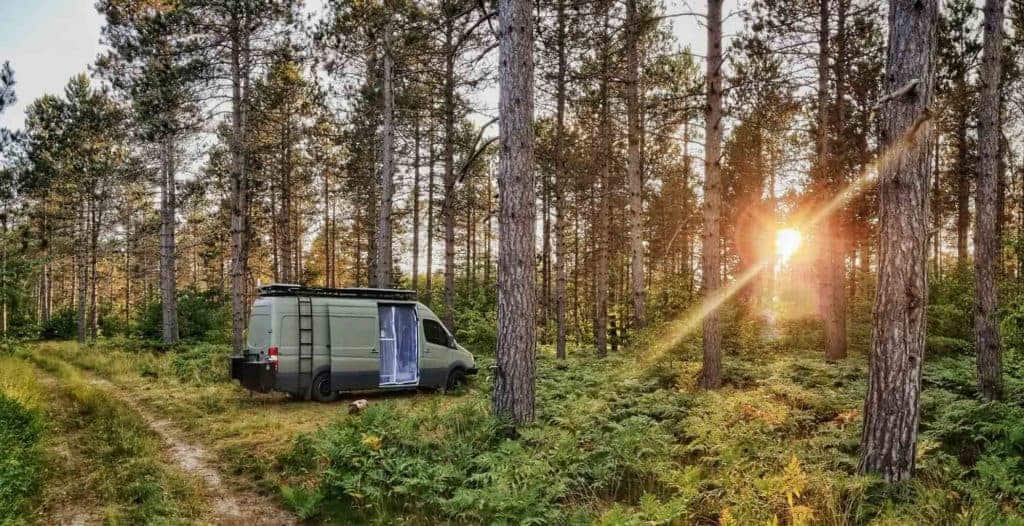
2WD SPRINTER PERFORMANCE IN WINTER CONDITIONS
We’ve spent the past 3 months in winter conditions, traveling from Denver to British Columbia to the Sierras in California in search of snow. During that time, we’ve been on snow covered, icy, slick roads many times. Our Sprinter has performed fantastically.
Over the last 3 months, we have yet to need to put on our snow chains, as the snow rated tires and a heavy van have performed very well. While we did get the van stuck one time, that was a driving error rather than a limitation of the 2WD Sprinter.
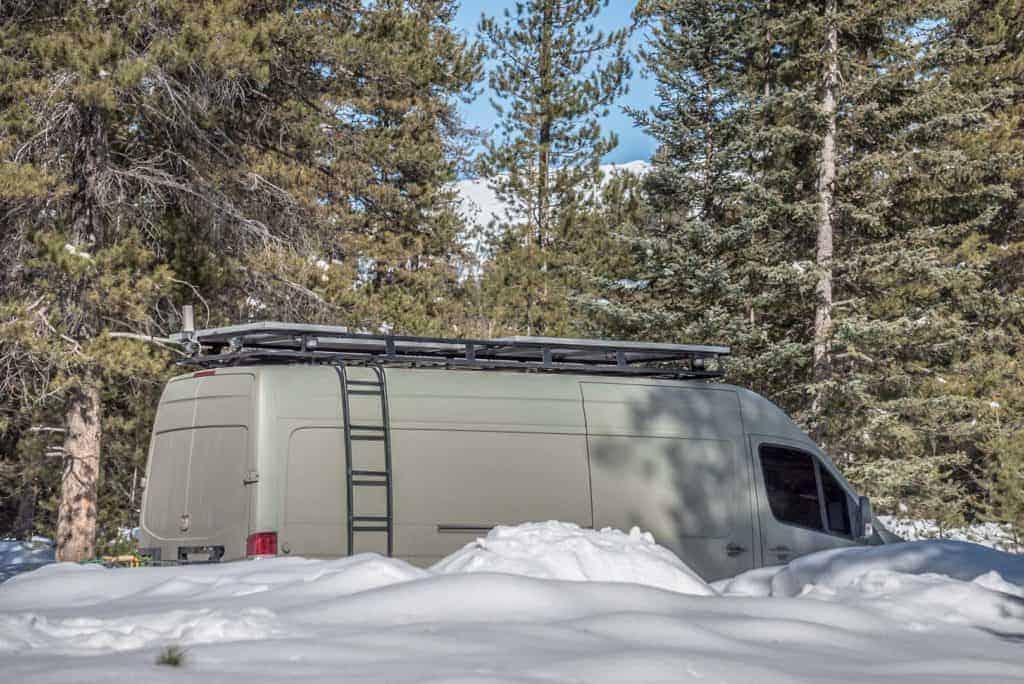
KNOWING YOUR VEHICLE’S CAPABILITIES
Above all technical specs of a vehicle, whether it’s 4×4 or 2WD or expedition ready, you need to know the limitations of your vehicle and its capabilities in general. Too often we see people use 4×4 as a crutch rather than a tool and end up getting themselves in a bad situation simply because they thought 4×4 would get them out of any situation.
Driver ability is more important, in my opinion, than the vehicle capabilities.Knowing how to choose lines, having a good spotter, and being able to back out of a situation are more important than the vehicle you have, so know your own limitations in driving off road.
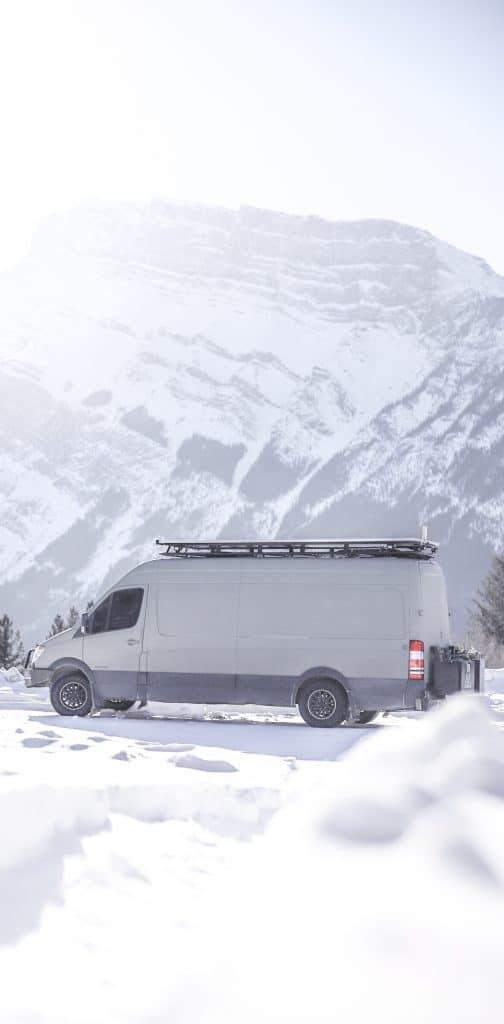
PREPARING FOR STICKY SITUATIONS
It all boils down to knowing your vehicle’s limitations, knowing your own driving capabilities, and then being prepared for the event that you do get yourself into a sticky situation. Carrying off road recovery equipment is necessary for anyone going off road, and knowing how to use the essential off road tools is imperative to be prepared.
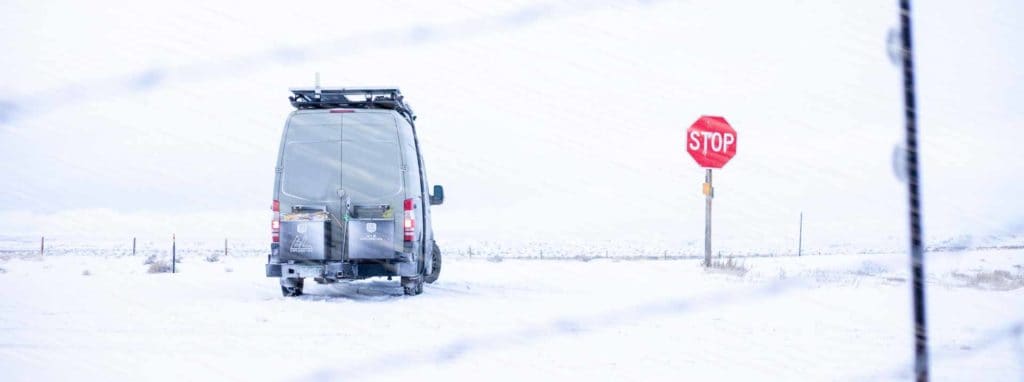
OFF ROAD RECOVERY GEAR
Having the essential off road tools in your kit can allow you to self-rescue when you do get into those sticky situations. Part of exploring remote areas means taking risks, and occasionally we all end up taking a bigger risk than we should have. In those situations, having off road recovery equipment can mean the difference between a bit of work and learning and an expensive tow truck call.
These are the minimum essential off road recovery gear to we feel is necessary for going off road in a campervan. In addition to these tools, having good all-terrain tires is helpful in going off road exploring.
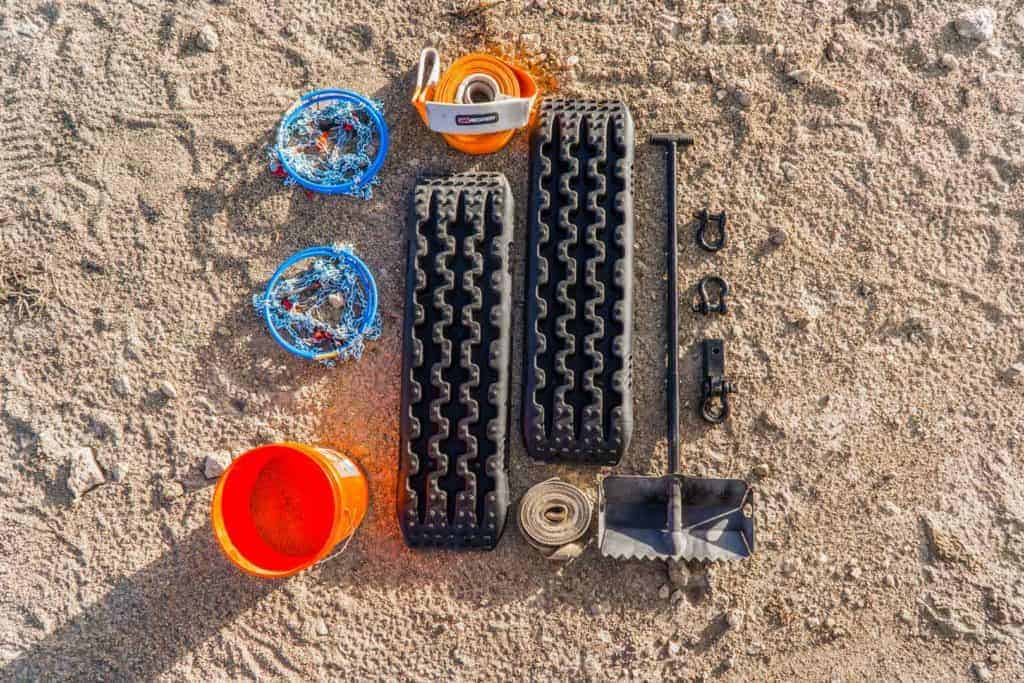
DMOS Shovel – (Buy on Amazon) The very first and most basic tool in our recovery gear kit is a shovel. This collapsible shovel is perfect for this. It’s a lightweight, powder coated aluminum foldable shovel that folds out to a full sized shovel. Made from heavy duty aluminum, it’s sturdy enough to really jam into the ice to break it up. It folds down to 18” x 9” x 3” when folded, so it fits great in our back box of recovery gear.
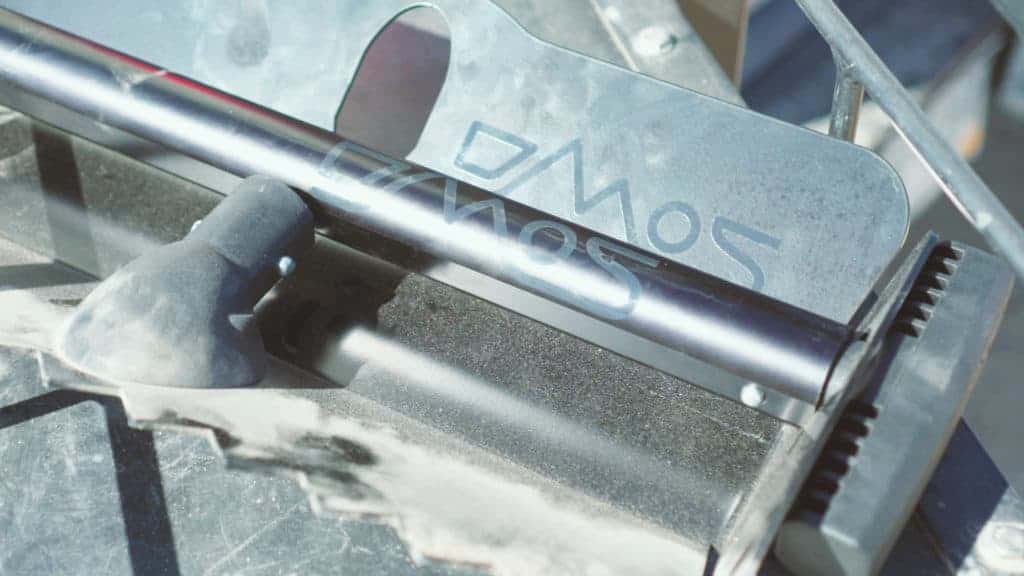
Bucket of Sand – Another very simple item in our recovery toolkit is just a bucket of sand. This is mostly used in winter conditions when you just need a little bit of extra traction on a slick, icy road or parking lot.
Floor Mats – We keep scrubby floor mats in our van to wipe shoes, but they also double as simple traction boards under lightly stuck conditions. They work great as a cheap solution to get out of a situation where your vehicle is just barely stuck. We’ve used them for extra traction in an icy parking lot when we couldn’t get out of a parking space.
X-Bull Traction Boards – And for the times when you’re really stuck, real traction boards are a necessity. Yes, we still keep the floor mats as an option when we don’t necessarily need the full traction boards, because floor mats are cheap. We’d rather break/destroy one of those than an expensive traction board. However, the traction boards are essential for recovery in a situation where mats are just not enough, such as sand or deep mud. Traction boards grab onto the tires and provide a solid ground to get the vehicle out.
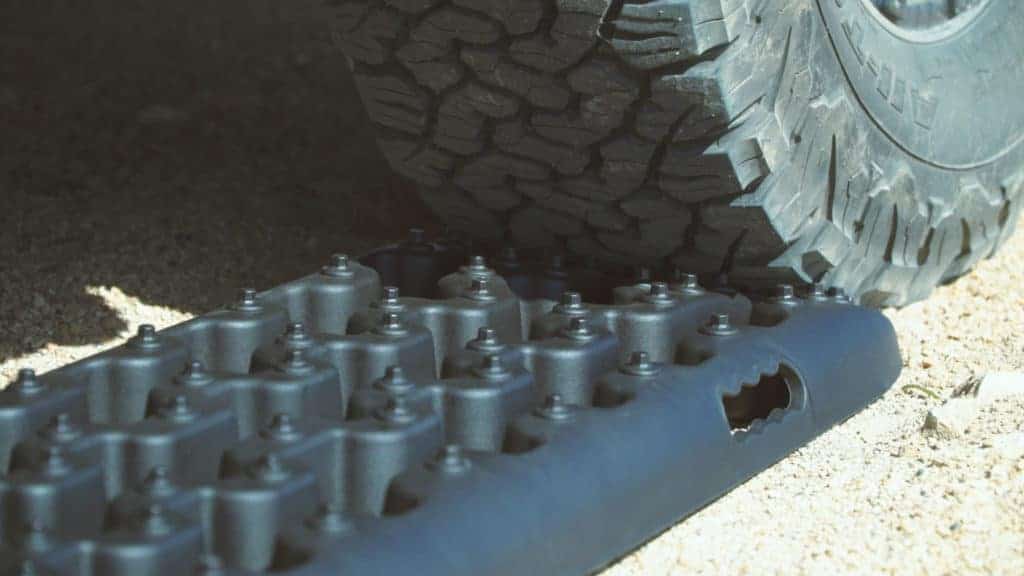
Tow Point Shackles – In case you do need to be towed out, you’ll need solid tow points. These Rhino shackles for both the front (2) and the back receiver hitch are heavy duty and provide a great tow point for our campervan. They mount directly to our heavy duty bumpers, which are rated for tow points. Be sure to check your bumpers and identify the correct tow points before attaching shackles.
Tow Straps – Along with the tow points, we carry a basic tow strap that can be used to tow our van or other vehicles out of a situation. This is a traditional tow strap that has no give in it and is meant to be used for gently towing another vehicle, not jolting it out which can cause damage with a tow strap.
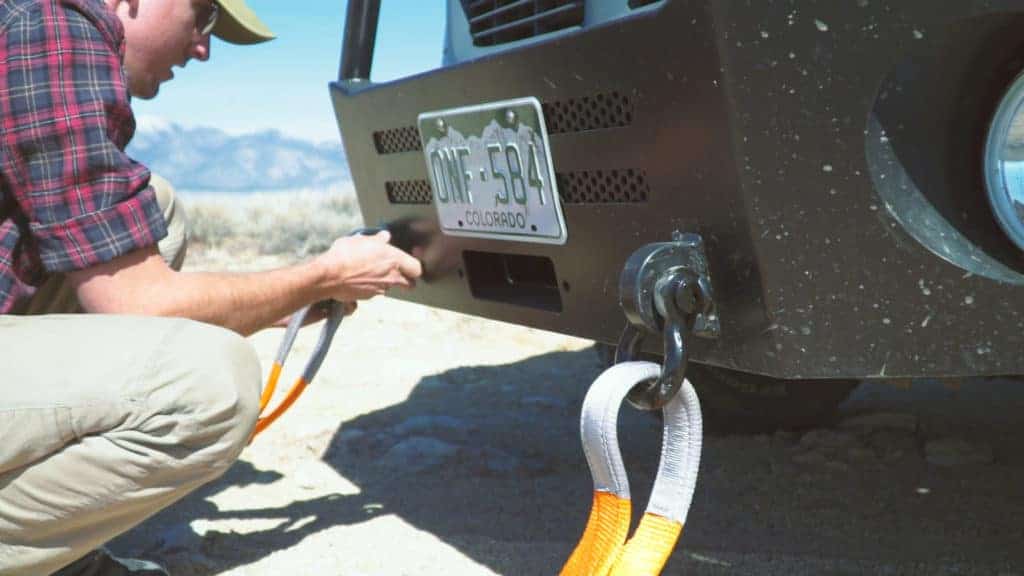
Dynamic Snatch Strap – Similar to a tow strap, a snatch strap is used to pull a vehicle out of a stuck situation. Unlike a tow strap, a snatch strap has some elasticity, allowing the towing vehicle to yank a little harder on the strap (such as a running start at it). The strap absorbs the majority of the load like a rubber band and doesn’t jolt the car being towed. Snatch straps are only used for short distances like pulling someone out of a mud bog. They are not used for towing a vehicle longer distances – that would be a tow strap. Having a dynamic snatch strap in your recovery gear can really save the day.
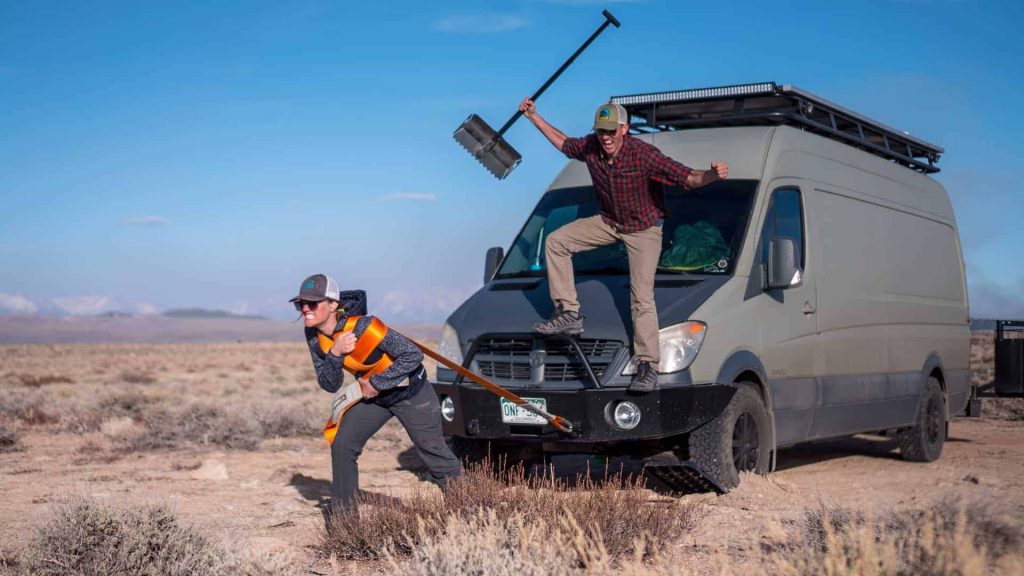
Snow Chains – Particularly necessary in winter conditions, snow chains can come in handy in multiple situations in off roading. In winter, snow chains allow for greater traction in slick, icy road conditions. Many passes in the mountains require vehicles to have snow chains in the winter, so carrying them is particularly necessary if you plan to be in those conditions. They can also be handy to carry in summer conditions, however. A snow chain will essentially turn your All-Terrain tire into a beefy mud tire that can get traction in very slick situations.
OFF ROAD RECOVERY GEAR
These are what we would consider to be the minimum essential off road recovery gear for anyone planning to travel off of maintained roads. Knowing how to use this gear is equally important, so be sure to get familiar with these tools before you need to use them!
What’s in your recovery gear kit? Let us know in the comments!
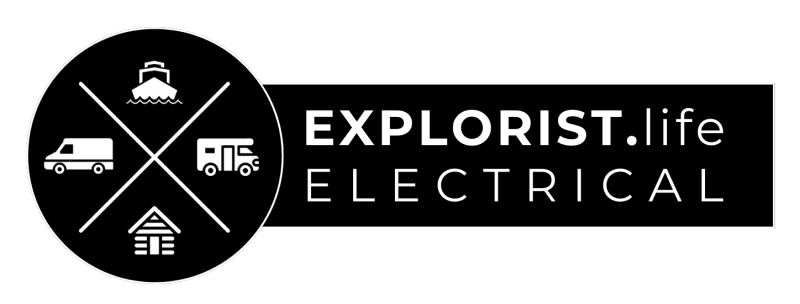
11 Responses
Thanks for this article. I live in Colorado and need a sprinter van. I would prefer 4×4 but may go rwd due to cost. I am also very interested in getting the best MPG i can get. Can you share your average MPG and do you have any mpg comparisons between 4×4 and RWD?
We got fuel mileages of anywhere from 10MPG to 22MPG depending on driving speed, wind speed/direction, and 95 other environmental factors. This will be the same for RWD OR 4×4. 4×4 will likely be about 0-5 MPG less than RWD depending on environmental conditions. If fuel mileage is a make or break concern, a Toyota Prius or similar is a better choice because at the end of the day… these vans are power hogging wind sails but it’s the price we’ve got to pay to play the game.
We don’t have a Sprinter, but recently bought an Econoline Van that we are fitting out for Adventure. While we were thinking of going the 4×4 route with a U-Joint conversion, we have decided to go keep the vehicle 2WD, lift it with Weld Tec’s Baja Grocery Getter (6″ Lift) and put new tires and wheels as well as an air locker for the rear differential. I’ve been told the ride will be a lot better on the highway than the U-Joint kit (which is amazing for offroad adventures) and, like you, we can probably get to anywhere we want to go with that setup, recovery tools and a winch.
In my 4×4 I carry all you list plus 2 handy man jack’s, a receiver winch usable on front or back, a 3/4 ton long chain come- a- long, generator with battery charger, and a 100ft half inch cable with hooks. We often camp at 10,000 ft in late November and we have fought 60″ snow drifts to get out numerous times.
Great article, I use everything you advises, and I also carry empty bags of legumes that take up little space and can be filled with sand to put under the wheels.
Is this sprinter rear or front wheel drive?
I believe all 2wd sprinters are rear wheel drive.
Sprinters are. But sometimes people use the word sprinter for other similar cars such as Dodge Ram ProMaster …
I suppose, but that’s incorrect as a promaster and a sprinter are not the same thing. Even a Dodge Sprinter is not the same as a Dodge Promaster. A dodge sprinter is just a mercedes sprinter helping Daimler Chrysler avoid paying import taxes. lol
5
5